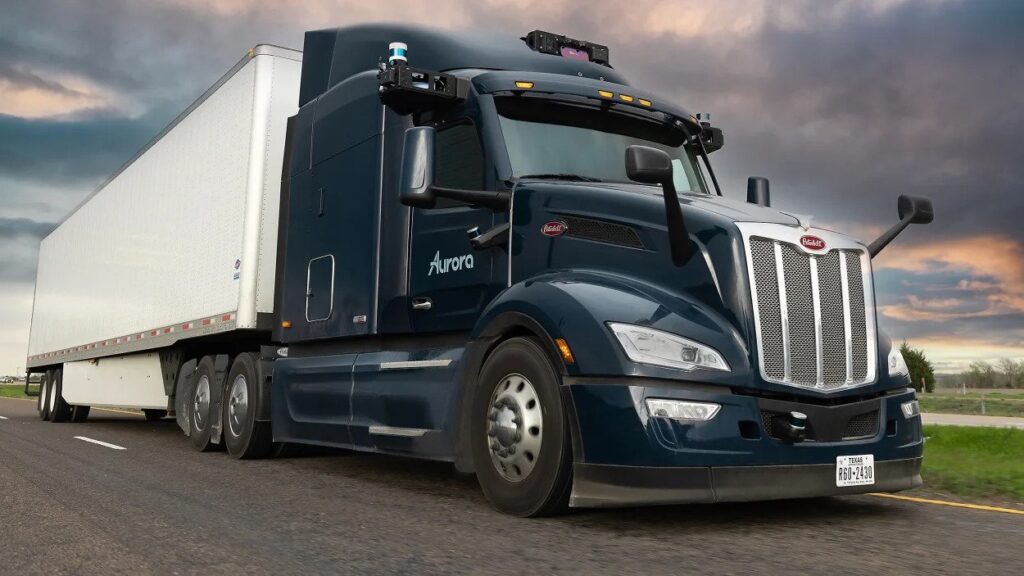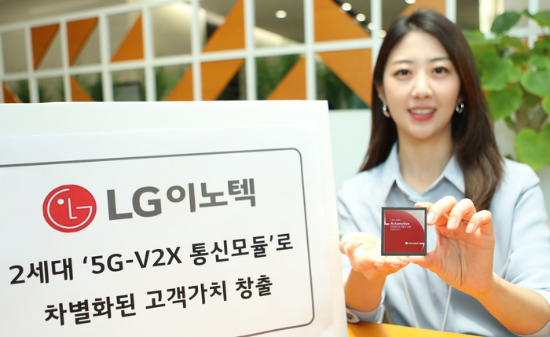
Vueron Newsletter
No. 2
2023.04.07
| Innoviz’s Second-Generation InnovizTwo LiDAR Selected to Power Commercial Vehicle OEM’s Fleet | ||
1. Aurora’s self-driving truck tech is one step closer to hitting the road
-
-
Aurora announced it has reached its “feature complete” milestone, meaning it has its core technology in place and can focus on fine-tuning its autonomous trucks.
-
It expects to begin commercial deployment in 2024, starting with the highway corridor from Dallas to Houston.
-
Aurora has partnered with existing companies, including Volvo, Toyota, Paccar, Uber Freight, and Uber’s self-driving unit, and gone public.
-
Its strategy of partnering reflects its desire to “focus on the thing we can do best,” according to CEO Chris Urmson.
-
Aurora is focused on trucking first, believing it can build up its trucking unit before turning its attention to the rideshare space in full.
-

In my opinion, Aurora’s achievement of reaching its “feature complete” milestone and the focus on refining its autonomous truck technology is a positive step for the development of self-driving technology. The company’s strategy of partnering with established players in the industry like Volvo, Toyota, and Uber Freight also seems like a smart move that could help them bring their technology to market faster. Focusing on the trucking industry first is also a wise decision, as it presents a more feasible market for broad commercial adoption of self-driving technology in the near future. Overall, it will be interesting to see how Aurora’s technology progresses and how they fare in the competitive self-driving trucking industry.
2. Innoviz’s Second-Generation InnovizTwo LiDAR Selected to Power Commercial Vehicle OEM’s Fleet
-
- Innoviz Technologies received a several hundred unit purchase order from a commercial vehicle OEM for its InnovizTwo LiDAR, as part of discussions for a new series production award.
- The order will be delivered to the customer throughout 2023, starting in Q2.
InnovizTwo LiDAR is a high-performance, automotive grade LiDAR sensor and perception software. - The potential for this new commercial vehicle platform to represent the Company’s fifth series production award could be additive to the long-term outlook.

The news about Innoviz receiving a purchase order for its LiDAR technology from a commercial vehicle OEM is a positive development for the company. It indicates that Innoviz’s product is being recognized and sought after in the automotive industry. Additionally, the potential for a new series production award for a commercial vehicle platform could be a significant opportunity for the company’s growth. Innoviz’s expanding global presence and its partnerships with major automotive players such as Volkswagen and BMW also bode well for its future success. The news highlights the growing demand for LiDAR technology in the automotive industry as it moves towards autonomous driving.
3. MicroVision Launches New Sensor and Generates Strong Q1 Revenue Forecast
-
- MicroVision specializes in developing MEMS-based solid-state laser beam scanning technology, which is used in various applications, including automotive lidar, augmented reality, and consumer electronics.
- On April 5, 2023, MicroVision launched its latest sensor, Movia.
- The announcement suggests that MicroVision is expected to generate between $400k-$500k in revenue in Q1 of 2023.
- The new Movia sensor is designed to be highly accurate and reliable, with a range of up to 200 meters, and can be integrated into various systems.
- The sensor is expected to be utilized in various applications, including automotive lidar, industrial automation, and robotics.
- MicroVision’s strong Q1 revenue forecast suggests that demand for their products remains robust.

Based on the article, it appears that MicroVision is making strides in the development of its MEMS-based solid-state laser beam scanning technology with the launch of its latest sensor, the Movia. The company’s focus on developing compact, low-power, and high-performance sensors for various applications is impressive, and the Q1 revenue forecast suggests strong demand for their products. This bodes well for the company’s future growth and expansion in the industry. However, it is important to note that the revenue generated from the new sensor and the legacy sensor order is relatively small, and it remains to be seen how MicroVision will compete with larger players in the market.
4. LG Innotek preoccupying the autonomous driving vehicle components market with 2nd generation ‘5G-V2X Cellular Module’
-
- LG Innotek, a leading global materials and components manufacturer, announced the release of its 2nd generation 5G-V2X (Vehicle to Everything) cellular module, which can be used for autonomous driving.
- The 2nd generation module has a high data transmission speed of up to 20 Mbps and low latency of less than 5ms.
- The module also supports both the C-V2X (Cellular-V2X) and DSRC (Dedicated Short-Range Communications) standards, enabling it to be used in different regions around the world.
- LG Innotek’s 5G-V2X cellular module is expected to be used in various autonomous driving applications, including vehicle-to-vehicle communication, vehicle-to-infrastructure communication, and vehicle-to-pedestrian communication.

As the autonomous driving industry continues to grow, the demand for advanced vehicle components is increasing. LG Innotek’s development of a 5G V2X cellular module for autonomous vehicles shows their commitment to meeting this demand and staying competitive in the market. The module’s ability to provide real-time communication and high-speed data transfer can greatly enhance the safety and efficiency of autonomous driving systems. This development also highlights the importance of collaboration between tech companies and automotive manufacturers to create innovative solutions for the future of transportation. Overall, LG Innotek’s continued investment in research and development can help drive progress in the autonomous driving industry and improve the safety and convenience of future transportation systems.
5. Chinese EV maker Xpeng launches advanced semi-autonomous driving system in Guangzhou, Shenzhen and Shanghai
-
-
Chinese electric vehicle (EV) manufacturer, Xpeng, has launched its advanced semi-autonomous driving system, XPILOT 4.0, in Guangzhou, Shenzhen, and Beijing.XPILOT 4.0 includes 31 sensors and uses a perception algorithm to achieve high-precision sensing and positioning.
-
The system includes new features such as a 360-degree high-definition camera, auto-lane change and auto-highway entrance ramp navigation, as well as an augmented reality (AR) head-up display that can project driving information onto the windshield.
-
Xpeng has also introduced its Luminous Electric Vehicle Architecture (LEVA), a new chassis platform for EVs.
-
The XPILOT 4.0 system and LEVA platform will be rolled out in Xpeng’s new P5 sedan, which is expected to hit the market later this year.
-

Based on the information provided in the article, Xpeng’s advanced autonomous driving system appears to be a positive development for the company and the broader EV industry in China. The new technology will allow Xpeng to compete with other Chinese EV manufacturers, such as Tesla and Nio, who already offer similar features. The fact that Xpeng’s autonomous driving system is powered by a domestically developed chip is also noteworthy, as it demonstrates China’s growing self-sufficiency in the tech industry. Overall, Xpeng’s new system could help the company to gain a competitive edge and continue to grow its market share in China’s rapidly expanding EV market.
*Contents above are the opinion of ChatGPT, not an individual nor company

